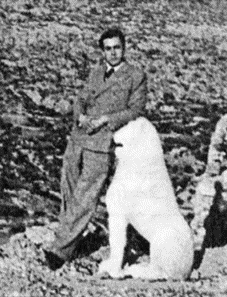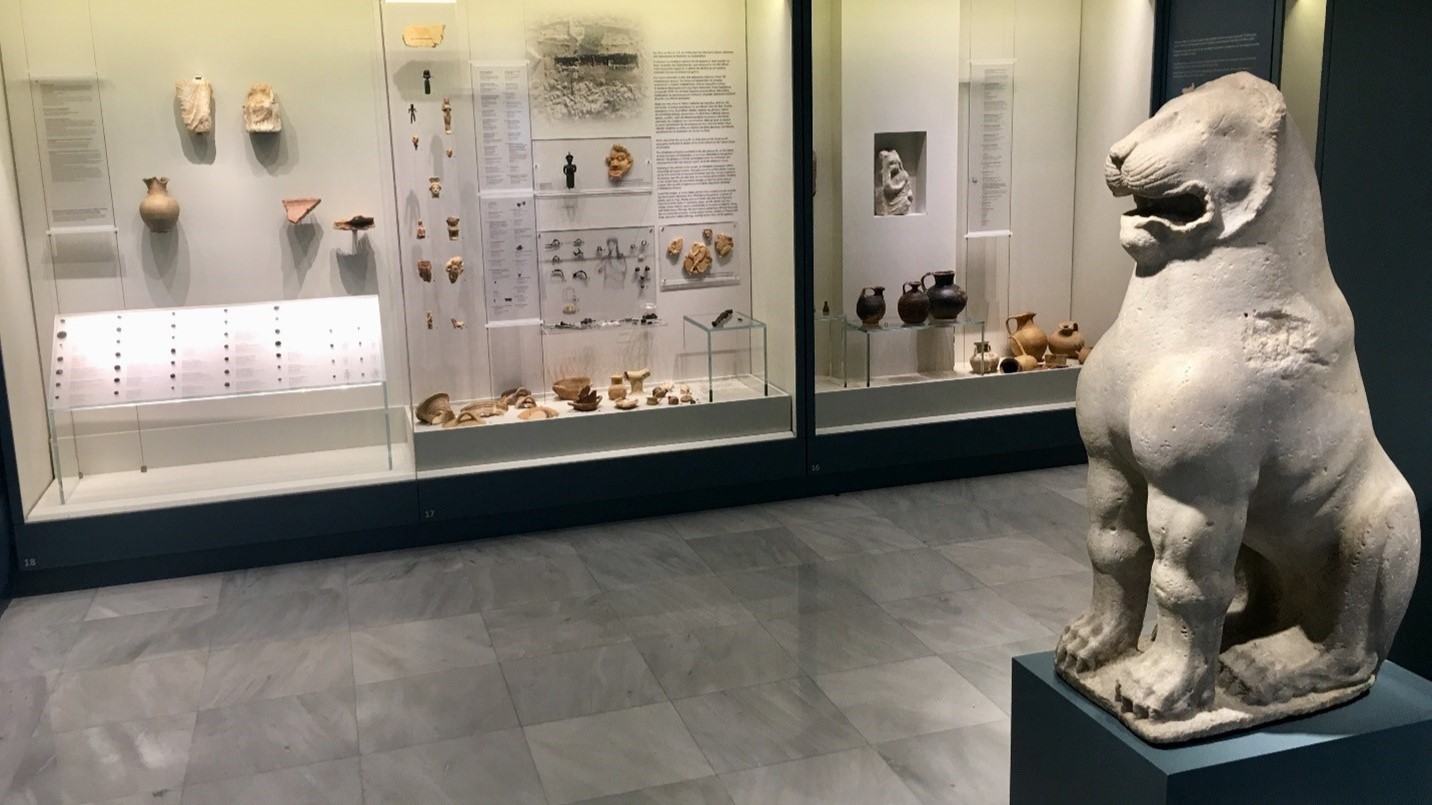By George Vardas
One of the most unique and well-known artefacts on display in the renovated Archaeological Museum of Kythera is a marble statue of a lion sitting on a plinth. How it ended up in the museum is a fascinating tale of discovery, loss and repatriation.
The lion was a popular subject in Greek art during the Archaic period (about 700–480 B.C.). In antiquity it was considered a guardian beast and statues of lions were often placed in cemeteries to guard the deceased or to stand as sentinel on the pediments of temples to ward off evil.
Kythera’s own archaic lion was unearthed in the early part of the 19th century at the ancient site of Kastri near Palaiopolis. It dates back to around the 6th century BC and is thought to be Laconian (or Spartan) in origin. In almost intact condition, the lion sits on its hind legs with its head facing forward and opening its mouth in a roar as if to warn off transgressors.
John Galt was a Scottish novelist and adventurer. In the summer of 1810, whilst travelling through the Mediterranean, Galt landed on Cerigo (as the island was then known) and eventually made his way to the old Venetian fortress in Chora, which stood on the “brow of a lofty, abrupt, precipitous promontory”, where he found an English garrison “languishing for pastime”. Galt recorded his observations of Cerigo in a book entitled Voyages and Travels in the years 1810, 1811 and 1812. He wrote that two or three relics of antiquity may be discovered on the island and singled out a marble lion which had been placed on a pedestal in the castle (probably by French forces that briefly occupied the island after the withdrawal of the Venetian occupiers) and which was regarded by the Cerigotes as a “very worshipful thing”.
The archaic lion of Kythera stood as a sentinel on the ramparts of the fortress.


According to Kythera’s local historian, Eleni Harou, the lion remained in that location for decades and was widely admired. A musician nicknamed Mantolas passed through the island during the 1920s and spent many a day in the fortress. When he was about to leave he was moved to say goodbye to the Lion of the Castle by reciting the verse:



Years passed until the island found itself under Nazi occupation during World War II. And then on a fateful day, 6 June 1941, the German commander ordered the lion be brought down from the castle where it was loaded on to a truck and from the port of Agia Pelagia was shipped to Piraeus and then on to Germany.
Spoliation of art and the looting of cultural treasures and antiquities was to be a hallmark of the German occupation of continental Europe during those dark ages.
After the war, Greece published a catalogue “Damage of Antiquities during the war and military occupation” and set about to recover stolen and looted art and sculptures. Kytherians in particular wondered what had happened to their marble lion.
According to rumours, the Lion of the Castle adorned a park in Germany and after the war was over was found abandoned in a city in the east of the country.
In 1952 the eminent Kytherian constitutional lawyer, Professor Giorgos Kasimatis, together with his compatriot, Grigoris Kasimatis, were in Freiburg in Germany and when a young German historian heard they were from Kythera, he casually mentioned that he had seen a marble lion with the inscription “Lion of Kythera” in a warehouse in Freiburg. They duly notified the competent authorities and sought the assistance of the Greek Consul in Munich to start the process for the repatriation of the lion. But by this time the lion had been relocated to the Museum of Berlin as a prize exhibit.
The request for return faced several hurdles mainly because at the time the Greek state did not have diplomatic relations with the German Democratic Republic in whose territory the lion was now situated. But the East Germans, in a gesture of goodwill, agreed to return the wayward lion statue.
Finally, in August 1957 the lion of Kythera returned to Greece and was placed in the National Archaeological Museum in Athens where it remained for many years despite requests for it to be brought back to the island. At one stage between 1979-80 it was included in a temporary sculptural exhibition organised by the Greek Ministry of Culture which toured Paris, New York, Moscow and Leningrad.

Professor Kasimatis then lobbied the new Greek Culture Minister, the feisty actress Melina Mercouri, for the return of the marble statue to Kythera.
The lion of Kythera was eventually repatriated in 1984 after the Ministry of Culture, following a decision by the Central Archaeological Council, resolved to satisfy the demand of the island’s inhabitants and return the statue to Chora for exhibition in the local museum.

But the lion’s journey was not yet over, despite his wonderings through time from Ancient Greece, the Venetian occupation of Kythera to the Nazi spoliation of the island and back again.
On 6 January 2006 Kythera was hit by a violent earthquake which caused extensive damage to the museum in Chora, forcing its closure and the removal and relocation of its many precious exhibits.
The lion statue was actually relocated to the Kastro which it once guarded and was temporarily placed in an old section of the castle which had been converted into a museum for the display of the Venetian coats of arms of the families of the Kytherian nobility.

And then, on 7 May 2016, the day arrived when the newly-renovated and splendidly refitted Archaeological Museum re-opened in Chora.
The Lion of Kythera had roared again and was finally restored to its rightful place as the guardian of Kythera’s rich cultural heritage.

